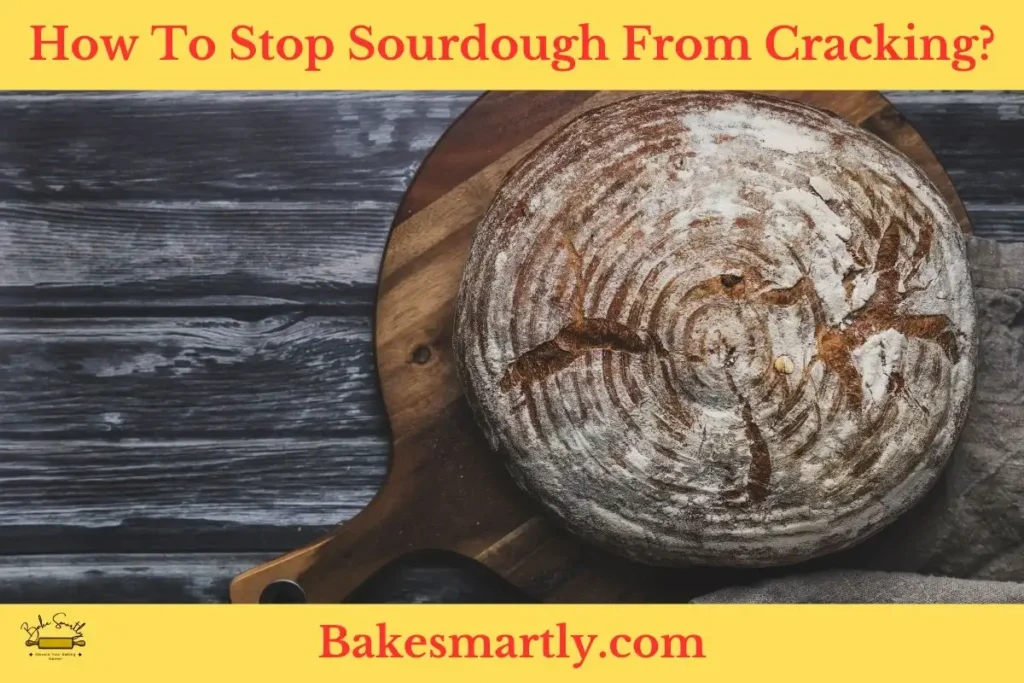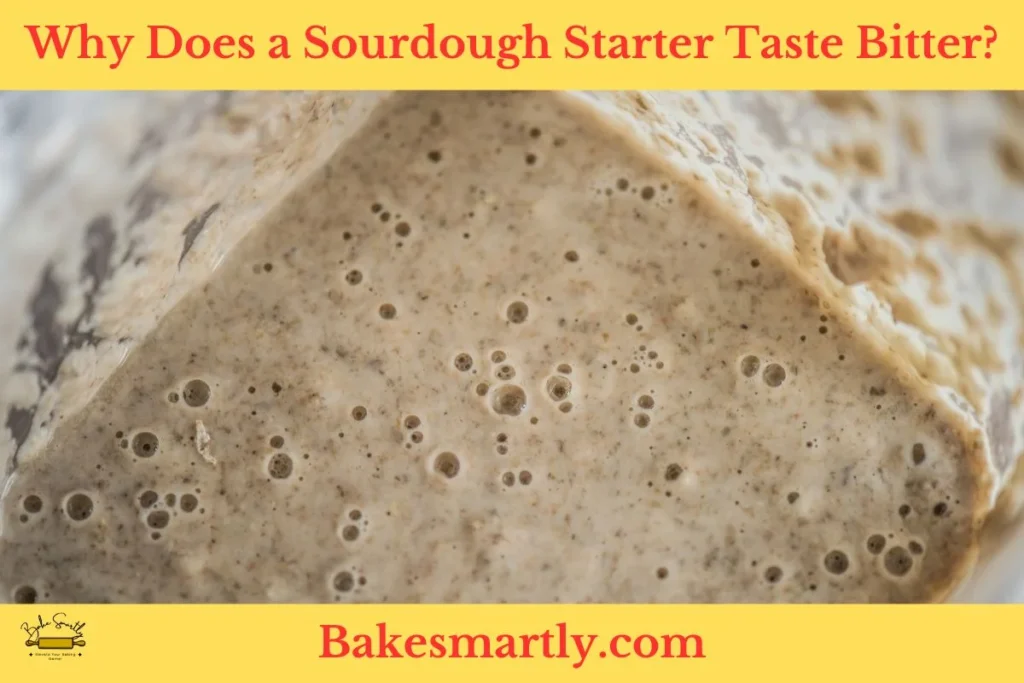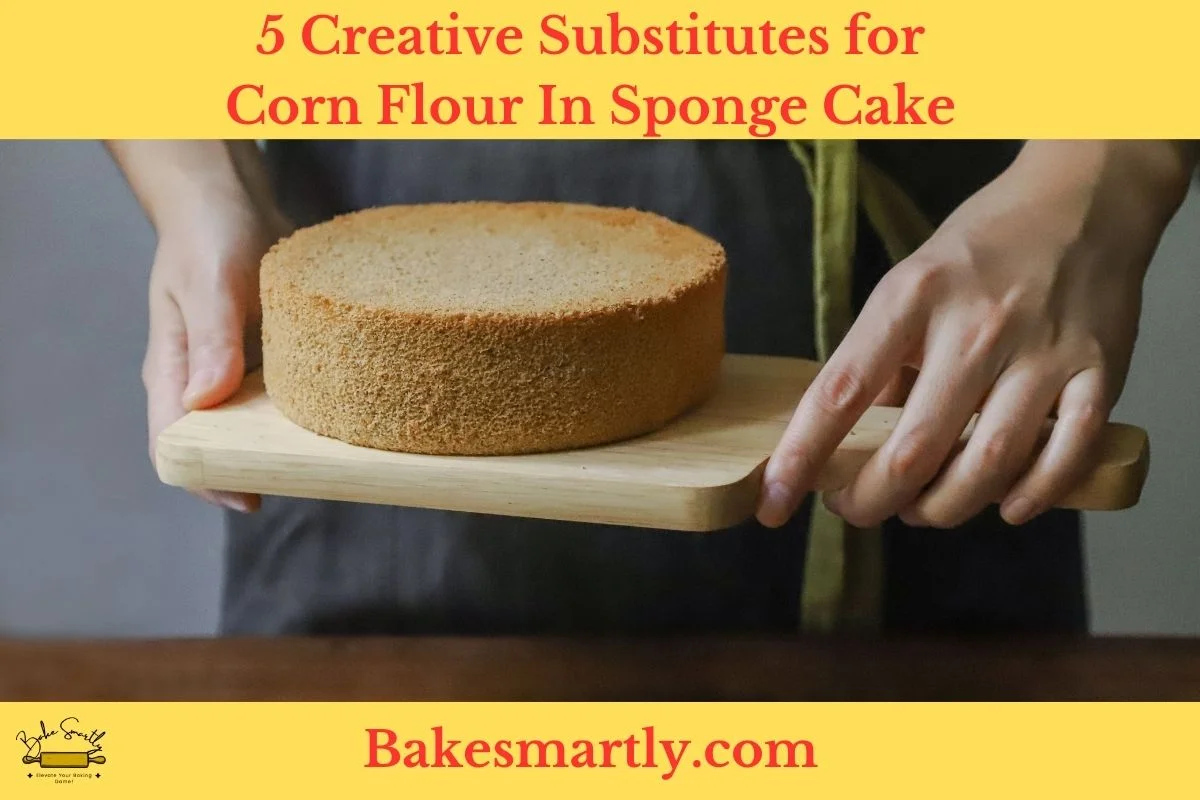
5 Creative Substitutes for Corn Flour In Sponge Cake
Baking the perfect sponge cake is like an art, and picking the right ingredients is super important. If you run out of corn flour or just feel like trying something new, we’ve got your back.
In this article, we’ll share five cool alternatives to corn flour. These not only keep your sponge cake awesome but also bring some fresh vibes to your baking adventure.
Table of Contents
ToggleCommon Uses of Corn Flour in Baking Cake
Corn flour is a super versatile ingredient that’s made its way into lots of baking recipes, and it’s a game-changer when it comes to whipping up delicious cakes. The unique qualities of corn flour amp up the texture, flavor, and overall yum factor of baked goods, making it a must-have in many kitchens.
- One of the go-to moves with corn flour in cake baking is using it as a thickening agent. It’s awesome at soaking up moisture and giving your cake batter a super smooth vibe, ensuring that perfect, consistent texture. This comes in handy, especially when you’re dealing with recipes that have different liquid levels – corn flour brings the stability and structure needed for a top-notch final product.
- And here’s the cool part: corn flour adds a subtle sweetness to your cakes, cranking up the flavor without overshadowing the other ingredients. Its neutral taste makes it a total team player, working well with all sorts of flavor combos. On top of that, it helps create a tender crumb in cakes, adding to that moist and soft texture that’ll have your taste buds doing a happy dance.
- In the gluten-free baking scene, corn flour steps up as a fantastic alternative, giving cakes that light and fluffy vibe without sacrificing quality. It’s a go-to for people with different dietary preferences, making baking inclusive and diverse.
So, beyond just thickening, corn flour brings a bunch of benefits to the table, making it a key player in whipping up irresistible, high-quality treats.
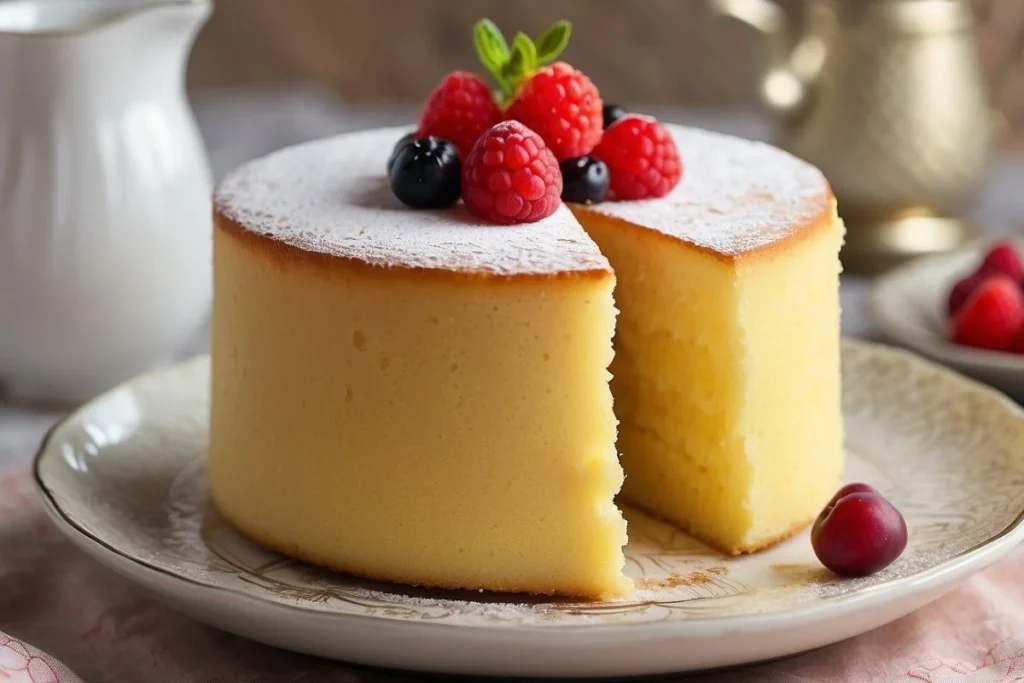
5 Alternatives to Corn Flour in Sponge Cake Recipes
When it comes to baking, innovation often leads to delightful surprises. If you find yourself without corn flour or simply want to add a twist to your sponge cake recipe, here are five alternatives that will not only substitute corn flour but also elevate your baking game.
1. Using Potato Starch as a Substitute for Corn Flour
Potato starch, derived from the humble potato, proves to be an excellent alternative to corn flour in sponge cakes. With its neutral flavor and fine texture, potato starch seamlessly integrates into your recipe. It enhances the softness of the cake, providing a light and airy texture that’s sure to please your palate. Plus, potato starch’s moisture-retaining properties ensure your sponge cake stays fresh for longer periods.
Potato starch is a gluten-free option, making it suitable for those with dietary restrictions. It serves as an ideal replacement, particularly in recipes where a delicate crumb texture is desired. Experiment with different ratios to find the perfect balance for your taste preferences.
2. Exploring the Use of Tapioca Flour in Sponge Cake Recipes
Tapioca flour, extracted from the cassava root, offers a unique twist to traditional sponge cake recipes. Known for its slightly sweet flavor and chewy texture, tapioca flour brings an interesting dynamic to your baking endeavors. When used as a substitute for corn flour, tapioca flour adds a pleasant elasticity to the cake, creating a delightful contrast to the soft crumb.
To incorporate tapioca flour into your sponge cake recipe, consider blending it with other gluten-free flour for a well-rounded flavor profile. The result is a sponge cake that’s not only gluten-free but also boasts a distinct chewiness that sets it apart from the conventional.
3. Using Rice Flour as a Gluten-Free Alternative to Corn Flour
For those seeking a gluten-free alternative without compromising on taste and texture, rice flour emerges as a stellar option. Rice flour, milled from ground rice, offers a light and delicate quality to your sponge cake. It’s an excellent substitute for corn flour, providing a smooth and tender crumb that melts in your mouth.
Rice flour’s versatility makes it easy to incorporate into various recipes. Whether you’re aiming for a classic vanilla sponge or a chocolate-infused delight, rice flour adapts seamlessly, offering a gluten-free solution for individuals with dietary restrictions.
4. Incorporating Almond Flour for a Nutty Twist in Sponge Cakes
Almond flour, derived from finely ground almonds, introduces a nutty richness to your sponge cakes. Beyond its distinctive flavor, almond flour brings a moist and dense texture, creating a delectable treat for almond enthusiasts. As a substitute for corn flour, almond flour adds depth and complexity to the overall taste profile of your cake.
To optimize the use of almond flour, consider adjusting the liquid content in your recipe, as almond flour tends to absorb more moisture. The result is a sponge cake that not only caters to those with gluten sensitivities but also captivates with its unique nutty essence.
5. Experimenting with Coconut Flour for a Tropical Flavor in Sponge Cakes
Transport your taste buds to a tropical paradise by incorporating coconut flour as a substitute for corn flour in your sponge cake. Coconut flour, made from dried and ground coconut meat, imparts a subtle sweetness and a delightful aroma to your baked goods. It brings a light and fluffy texture to the cake, ensuring a moist and flavorful outcome.
Due to its absorbent nature, coconut flour requires more liquid than traditional flour. Experiment with the ratio of wet to dry ingredients to achieve the perfect consistency. The result is a sponge cake that not only satisfies your sweet tooth but also offers a hint of the tropics in every bite.
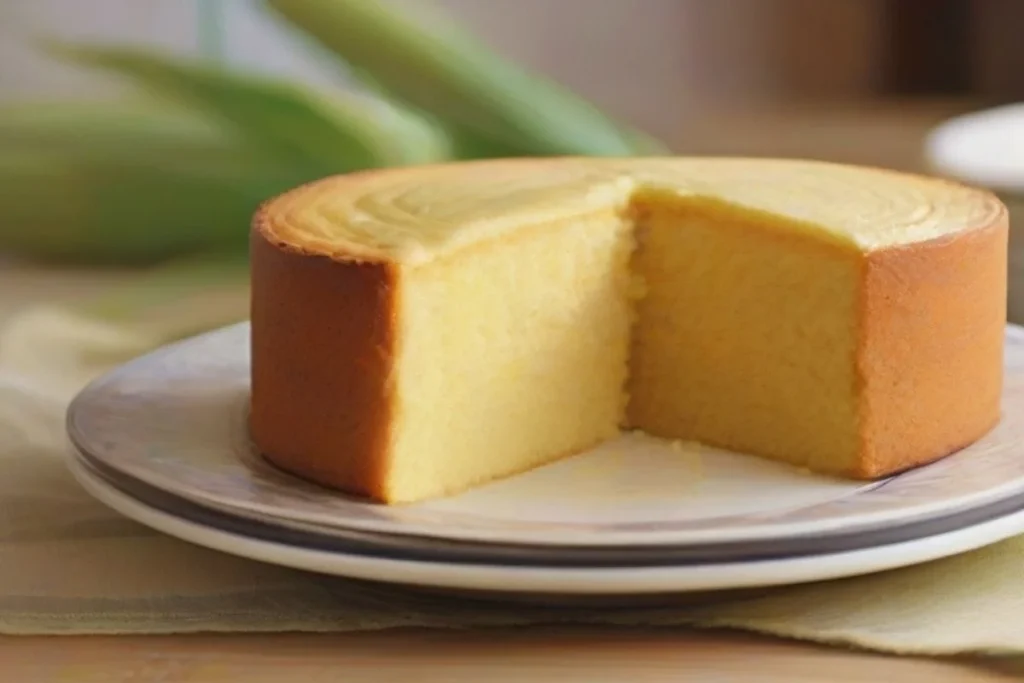
Tips for Successfully Substituting Corn Flour in Sponge Cake Recipes
Embarking on a baking adventure can be a bit like a tasty experiment, especially when you’re swapping out a crucial ingredient like corn flour in your sponge cake recipe.
I’ve got some tips, based on my own baking experiences, to help you make the switch to alternative flours without sacrificing the delicious taste and texture of your sponge cake.
- Embrace the Unique Flavors: Each substitute brings its special flavor to the mix. Whether you go for almond flour, coconut flour, or potato starch, appreciate the unique taste it adds to your sponge cake. Think about the overall flavor you want and pick a substitute that goes well with what you’re aiming for.
- Adjust the Moisture Levels: Different flours soak up different amounts of liquid. When you’re subbing out corn flour, be aware of the moisture in your recipe. For flours like almond and coconut that absorb more liquid, tweak the ratio of wet to dry ingredients. This ensures your sponge cake stays perfectly moist and fluffy.
- Mix and Match for Texture: Make your sponge cake even better by trying a mix of alternative flours. Combining rice flour with tapioca flour or almond flour with potato starch can give you a cake with a fantastic crumb and feel in your mouth.
- Test in Small Batches: Before you commit to a full cake, do some mini-experiments. Bake a small version of your sponge cake using the substitute to see how it behaves in the oven. This lets you make on-the-spot changes to the recipe and ensures the final result turns out just right.
- Watch Out for Allergies: If you’re swapping out corn flour because of dietary restrictions or allergies, always check for potential allergens in your substitute. Some alternatives, like almond flour, might not work for people with nut allergies. Make sure your tweaked recipe is safe and inclusive for everyone.
- Trust Your Taste Buds: In the end, your taste buds know best. Take the time to enjoy the subtleties of the substituted flour in your sponge cake. If the flavor and texture match what you’re going for, you’ve successfully navigated the world of substitutions.
Can I Replace Baking Powder with Cornstarch?
While both baking powder and cornstarch are common in the kitchen, they have different jobs. Baking powder helps baked goods rise, while cornstarch thickens things up. The thing is, you can’t switch them out in recipes. If you use cornstarch instead of baking powder, your dish might end up flat and dense without that nice rising effect.
It’s best to stick to what the recipe suggests to make sure your cooking turns out just right. So, if you need a substitute for baking powder, try out other stuff that makes things rise instead of reaching for cornstarch.
What can I use if I don’t have corn flour?
Explore alternatives like rice flour, potato starch, or almond flour as substitutes for corn flour in your recipes. Each brings a unique texture and flavor, ensuring your culinary creations maintain their deliciousness.
What type of flour is best for sponge cake?
For a light and tender sponge cake, opt for rice flour or almond flour. Their fine textures contribute to a delightful crumb, creating a memorable baking experience.
What can I use instead of cornstarch in a cake?
Replace cornstarch with alternatives like arrowroot powder or tapioca flour for effective thickening in your cake recipes. These substitutes maintain the desired texture without compromising on quality.
What does cornflour do in a cake?
Corn flour serves as a thickening agent in cakes, enhancing their texture. It contributes to a soft and tender crumb, making the cake more palatable. Additionally, it can be used to achieve a smooth consistency in various cake batters.
Final Thoughts
In the wonderful world of baking, making the perfect sponge cake is like creating a masterpiece, and picking the right ingredients is like choosing colors for a painting. While corn flour is important, this article explores five awesome alternatives: potato starch, tapioca flour, rice flour, almond flour, and coconut flour.
These not only replace corn flour but also kick your baking up a notch, giving you different textures and flavors. Try these options, adjust how much liquid you use, mix them, test in small batches, and be mindful of allergies. Trust your taste buds, and enjoy the art of baking with a twist, breaking away from the usual ingredients. Happy baking!
Lindsey Mackenzie
About me
Hi there! I’m Lindsey Mackenzie, the founder of Bake Smartly. Baking has been my passion since childhood, growing up in my father’s bakery. With Bake Smartly, I’m excited to share my love for all things sweet and savory. Join me on this delicious journey as we whip up scrumptious treats and sprinkle joy into every bite!


